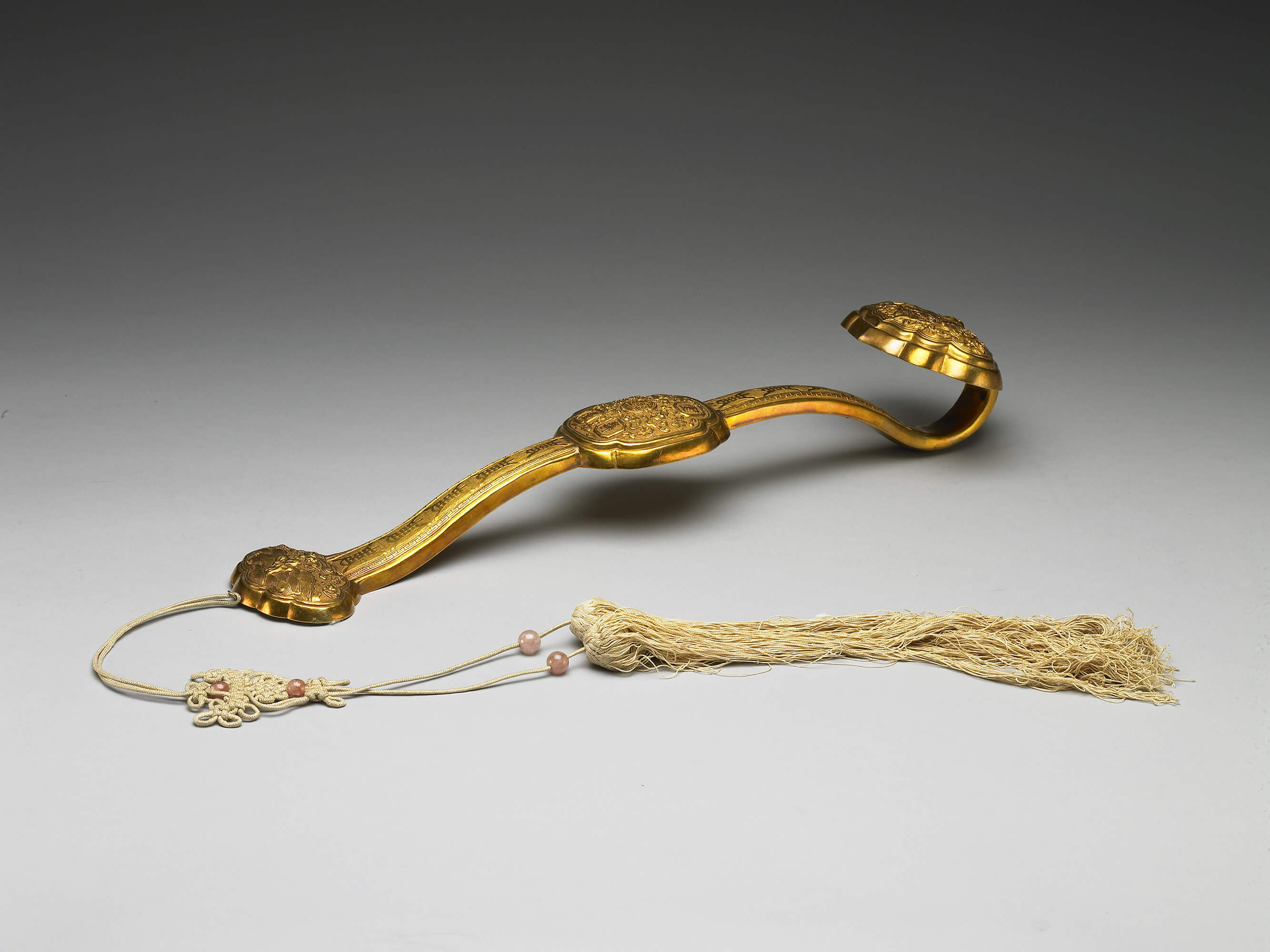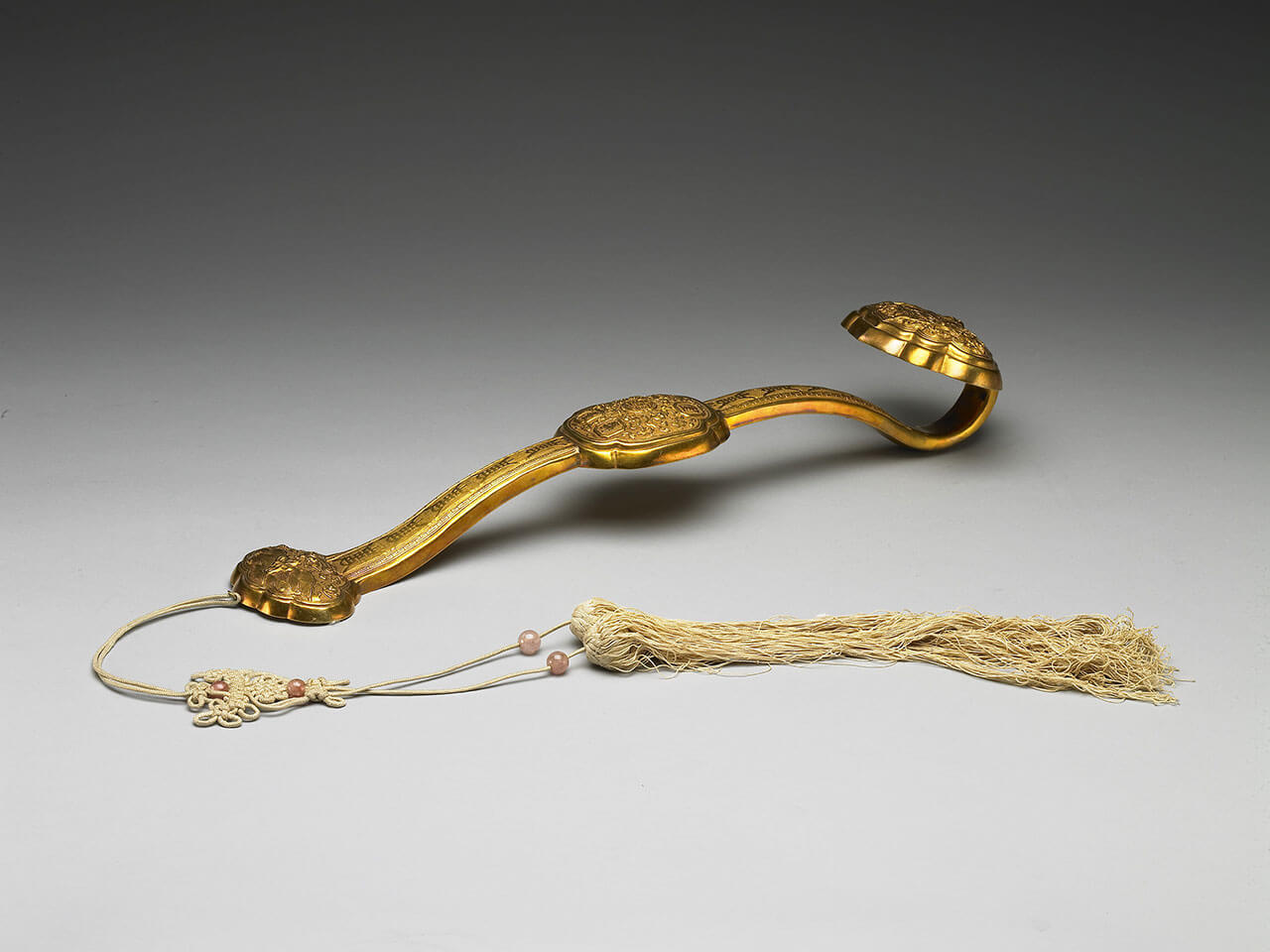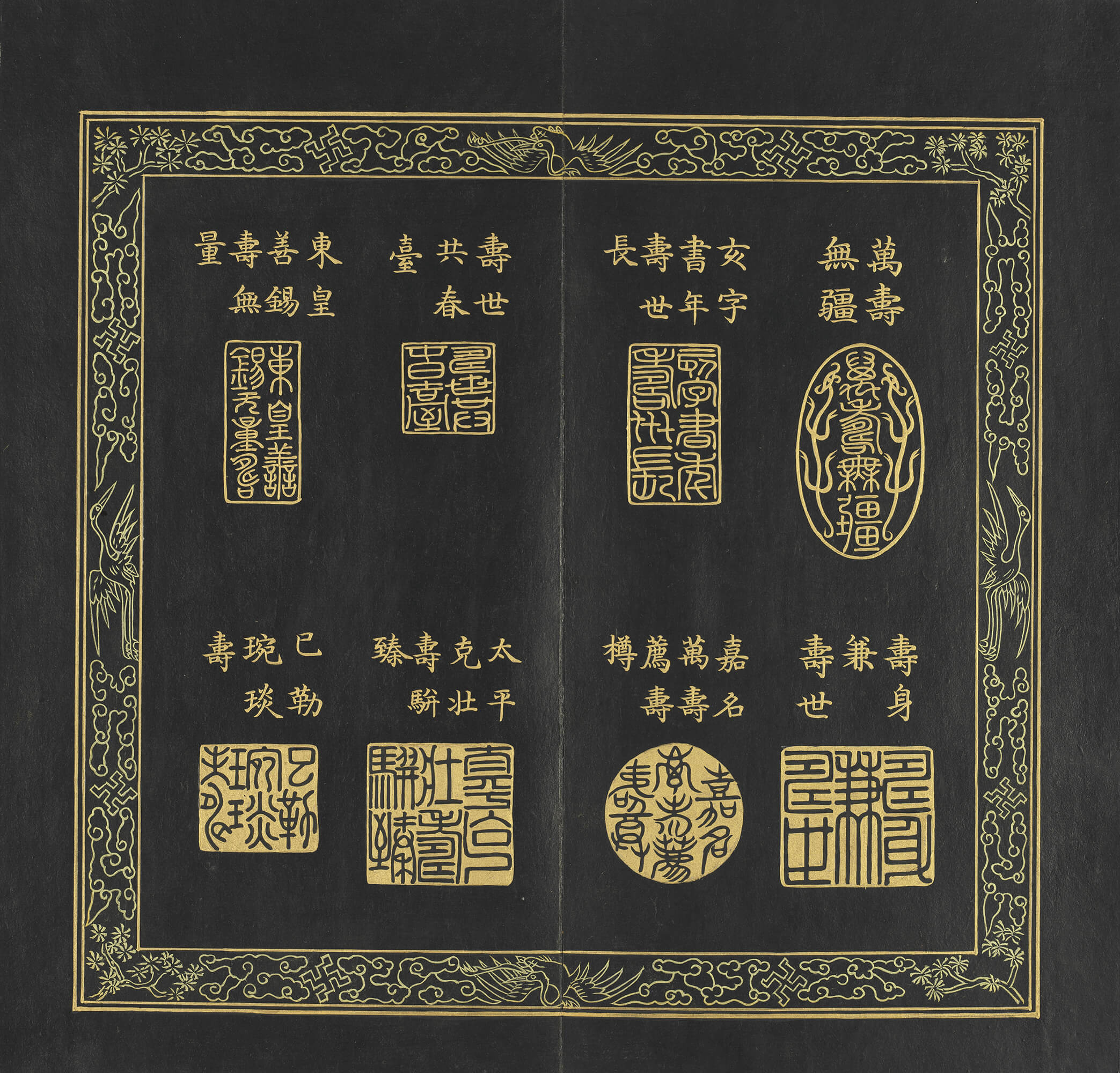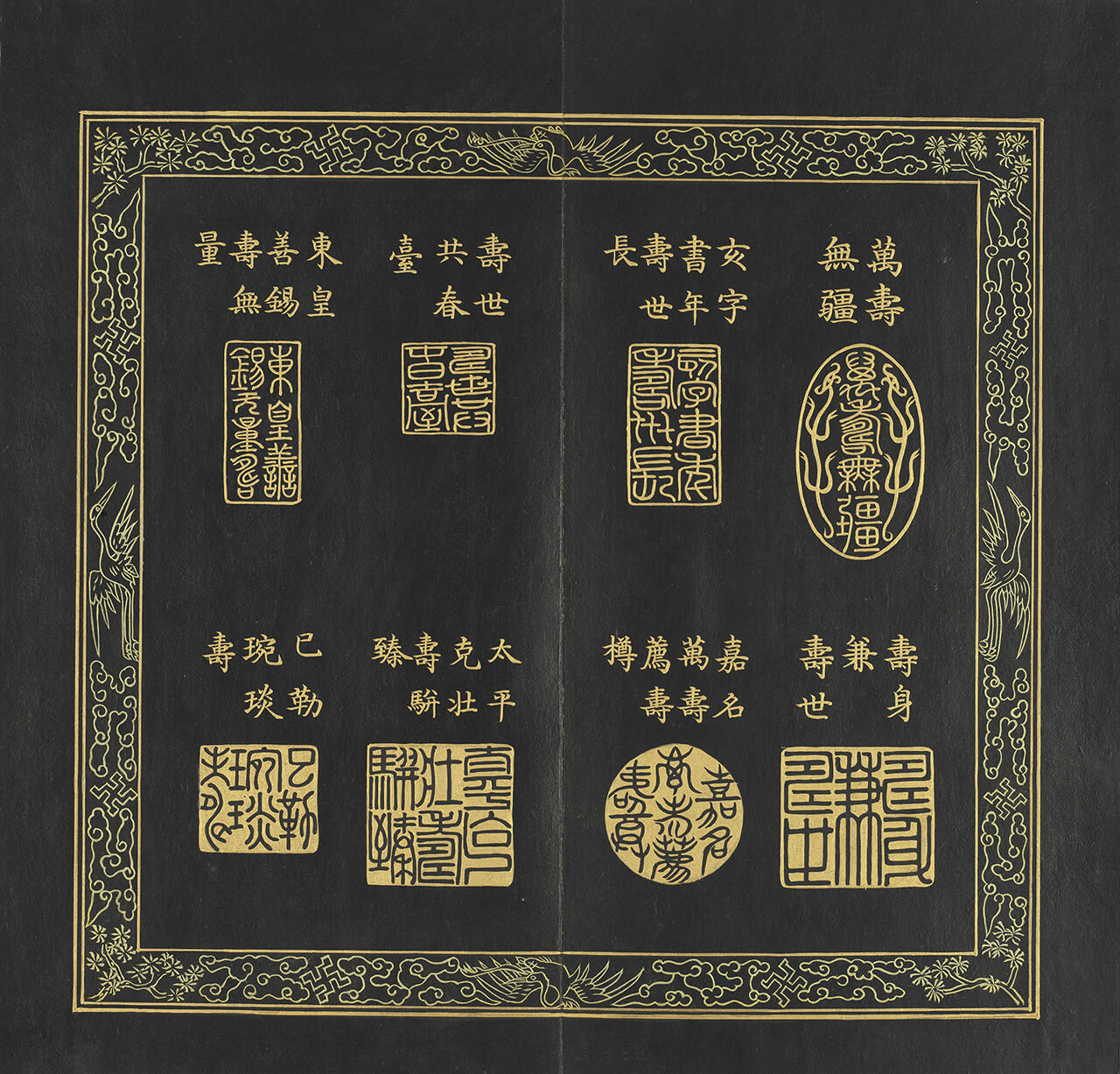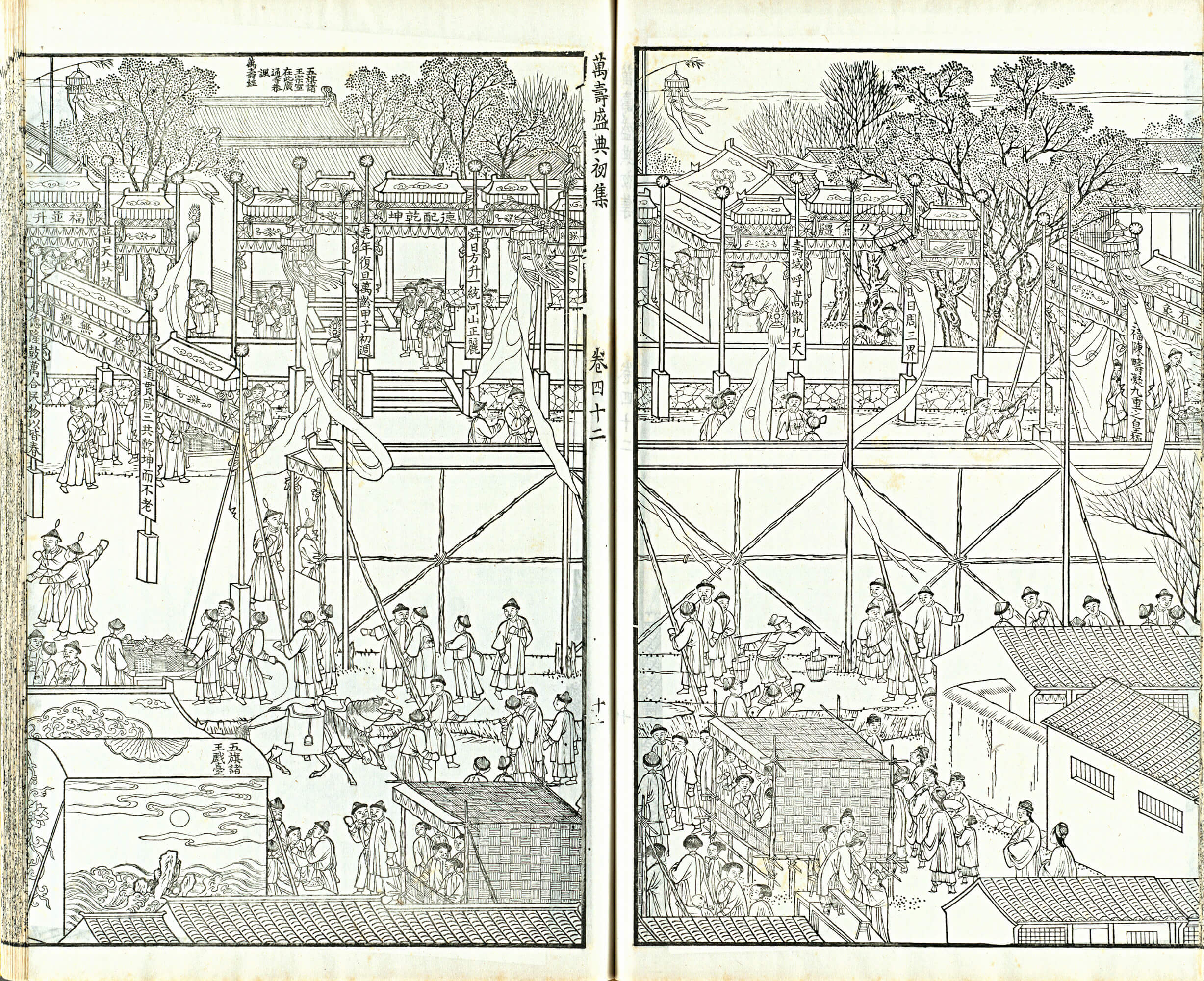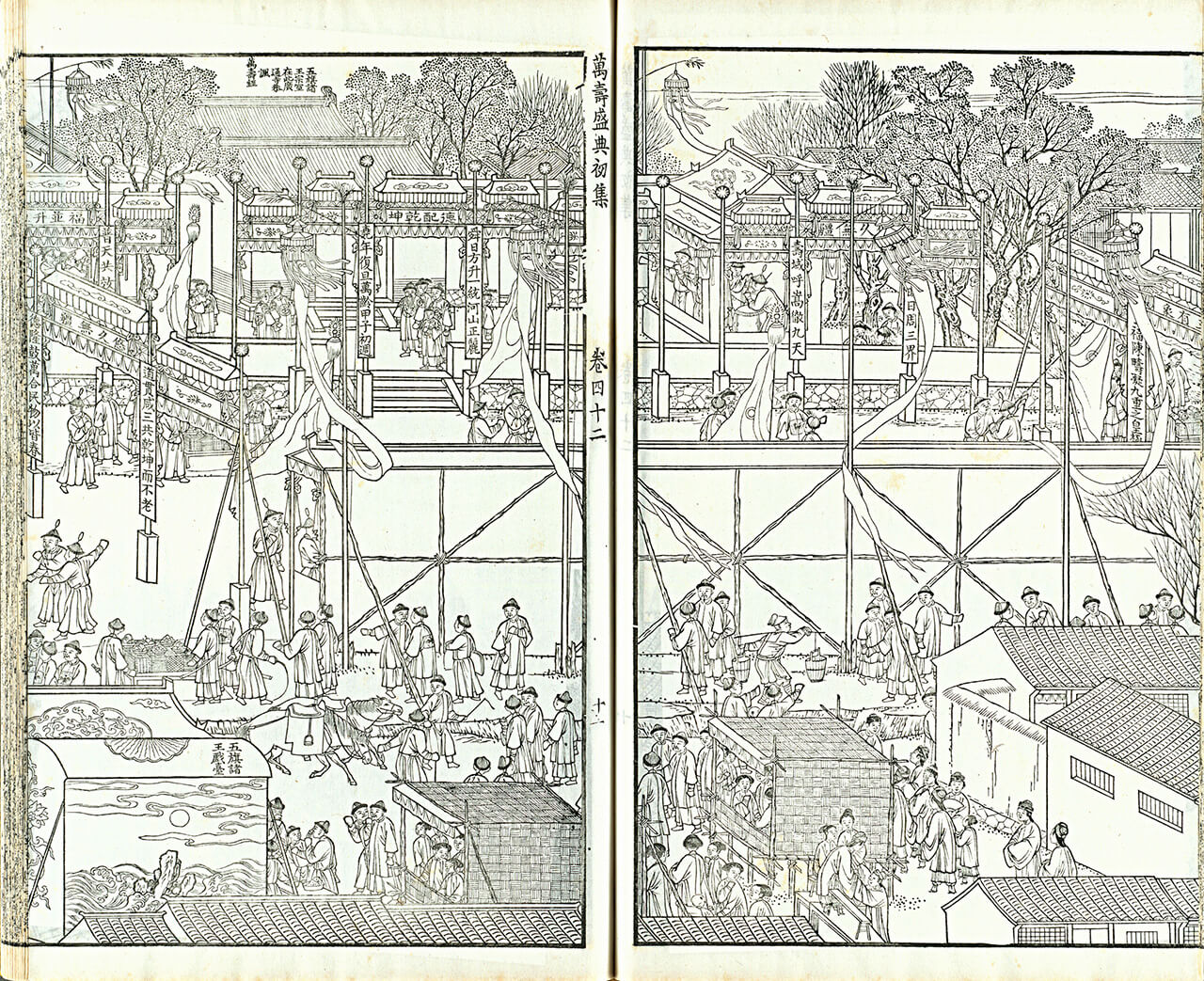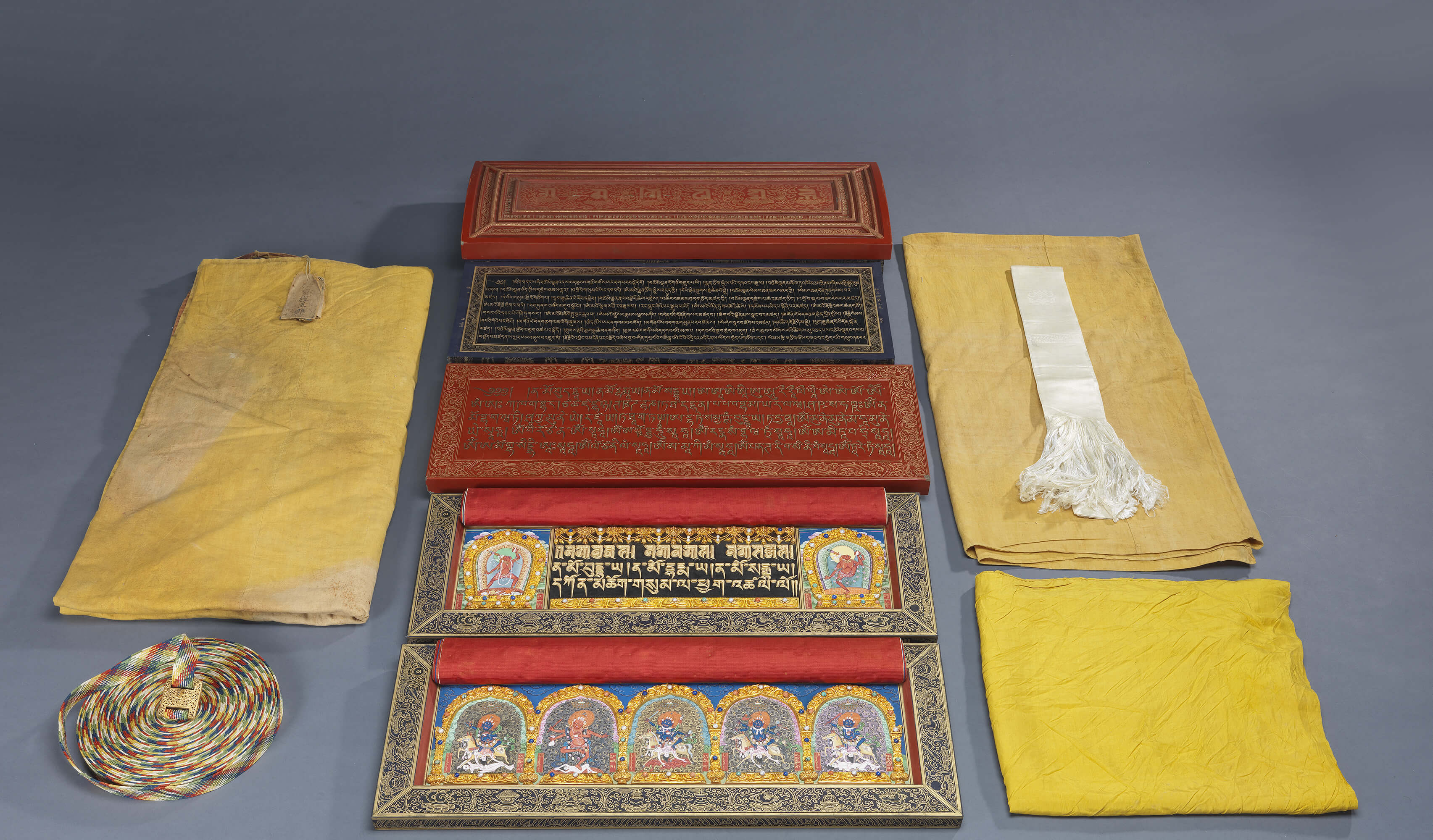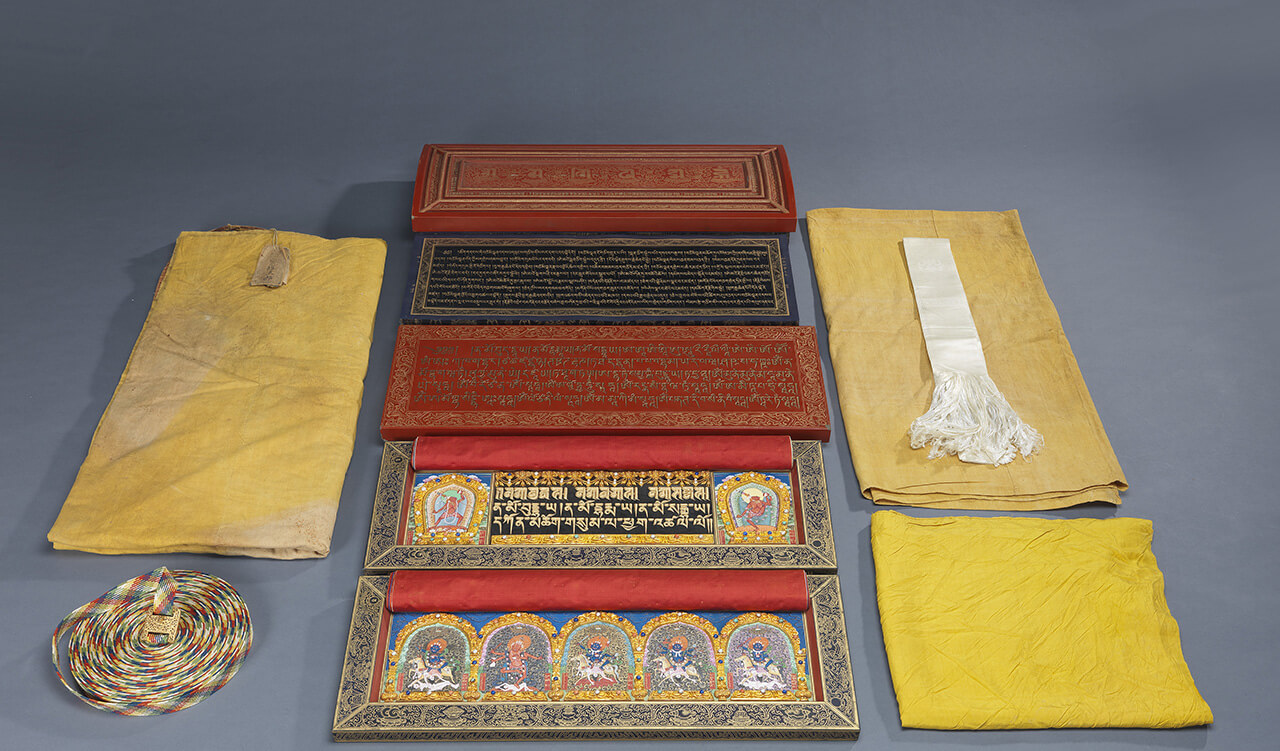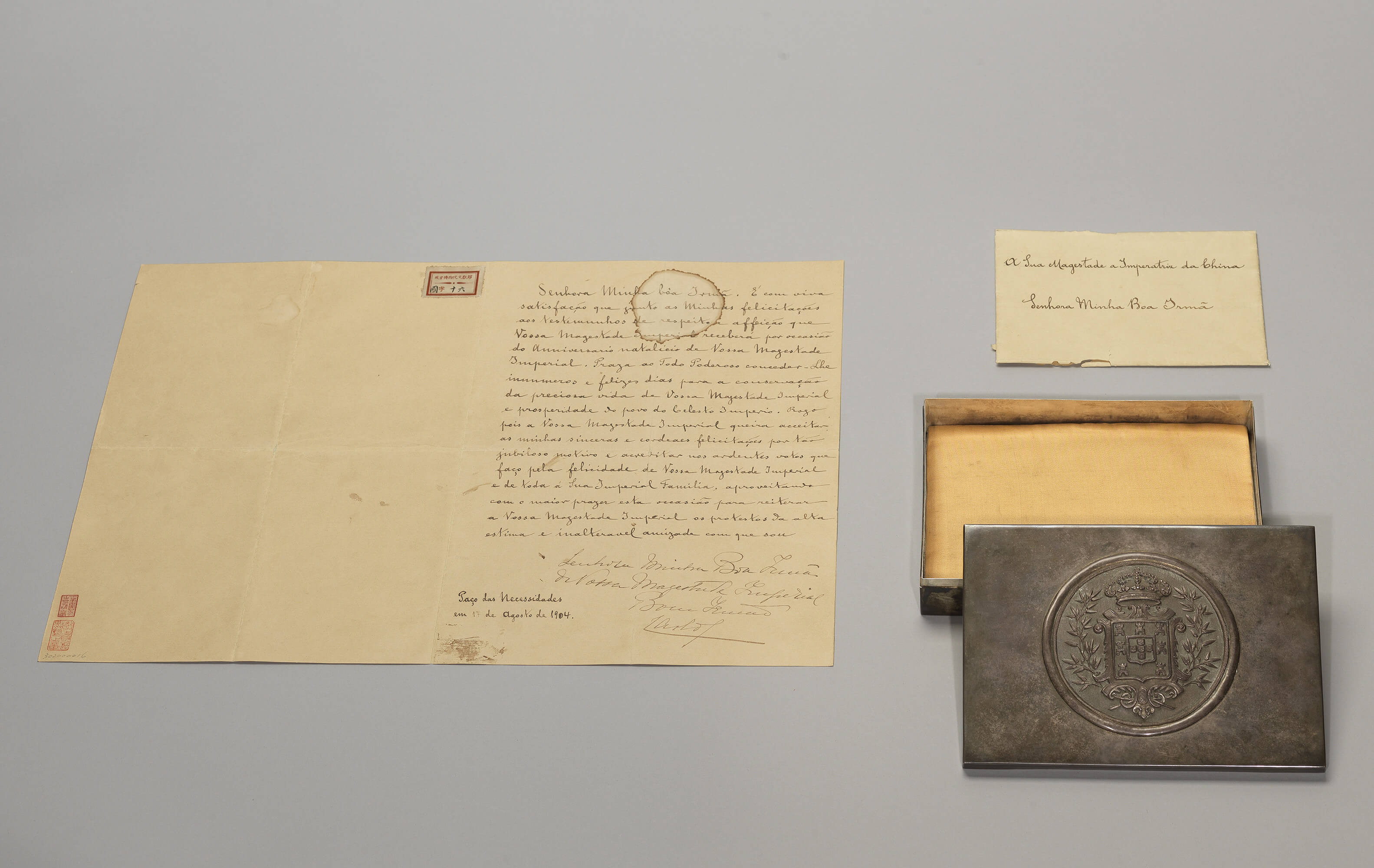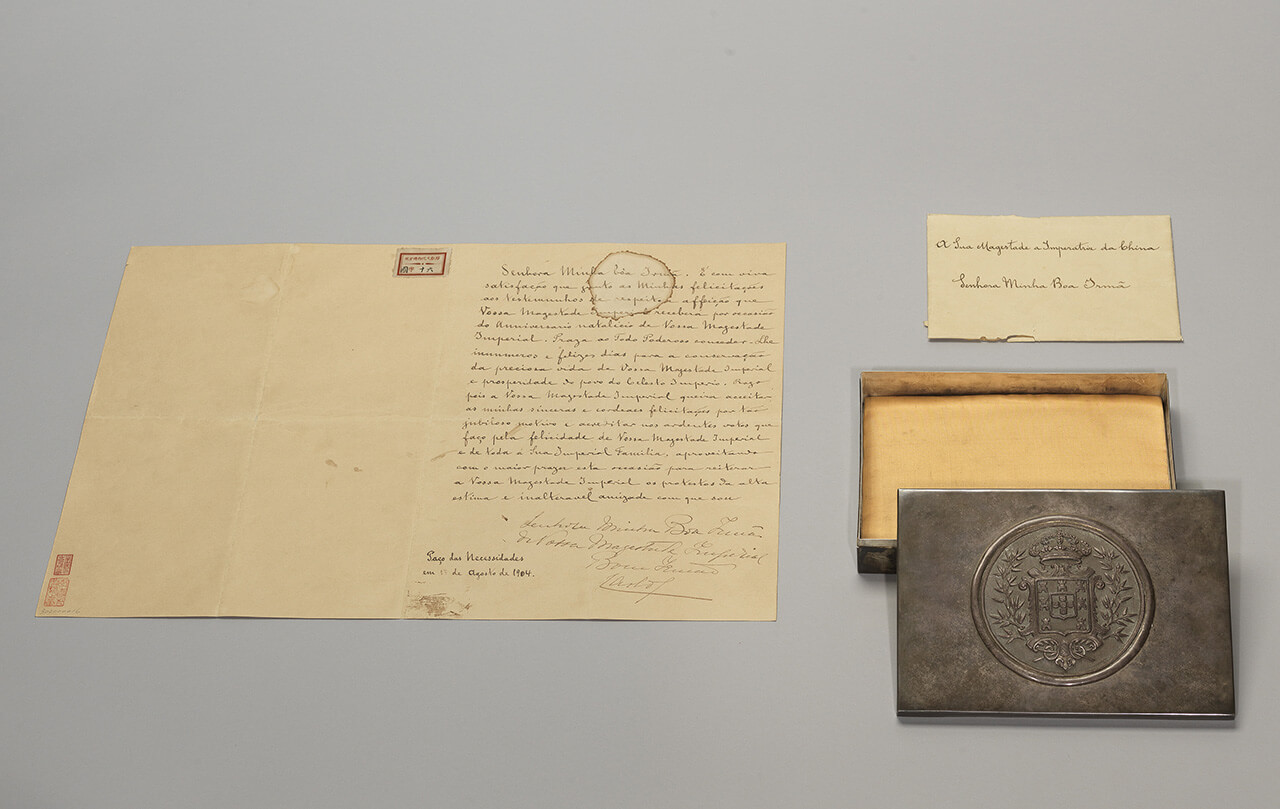Festival Celebrations
Traditional festivals reflected both ancestral wisdom and the pleasures of life. The Qingshigao (Draft History of Qing) records that in 1651 three occasions were designated as major festivals: New Year's Day, Winter Solstice, and Imperial Birthday Celebrations. The accompanying annual observances were the New Year's court assembly, winter solstice heaven-worship, and imperial birthday festivities, which followed historical and natural cycles, and demonstrated the Qing dynasty's adaptation to changing human activities and seasons, and the eternal connection between humans and nature.
Imperial Birthday Celebrations
- Gold ruyi scepter with eternal longevity inscription
- Qing dynasty (1644–1911)
The gold ruyi centers on the Star God of Longevity surrounded by deer, cranes, bats, and auspicious clouds—symbols of happiness, prosperity, and longevity. Five bats encircle a longevity character on the shaft, with "boundless imperial longevity" in regular script. The base depicts the Mountains of Long Life and Sea of Blessings, while the shaft bears elongated longevity characters. A yellow silk label identifies this as the Xuantong Emperor's gift to Empress Dowager Longyu.
- Imperial Canonical Prose, Prime Notes on Longevity
- Gingiyan
- 1790, Qing dynasty
Compiled in 1790 by court official Gingiyan, this work is a two-volume collection of auspicious seals created for the Qianlong Emperor's 80th birthday.
- Wanshou Shengdian Chuji (First Collection of Imperial Birthday Celebration)
- Vol. 42
- Compiled on imperial order by Wang Yuanqi et al., Qing dynasty
- Wuying Palace edition
- 1717, Qing dynasty
In 1713, marking the Kangxi Emperor's 60th year, court officials compiled the Illustrated Compendium of Imperial Birthday Celebrations.
- Qianlong Kangyur in Tibetan Script
- Imperial Household manuscript copy in gold ink
- 1770, Qing dynasty
This gold-ink Kangyur of 108 volumes, completed in 1770, is based on the Kangxi-era format. Its creation coincided with the Qianlong Emperor's 60th birthday and Empress Dowager Xiaosheng Xian's 80th birthday celebrations (1770–71). During this period of intensive Buddhist patronage, the court commissioned the Potala-inspired Putuo Zongcheng Temple at Chengde and renovated Beijing's Huang and Gongde Temples. The manuscript likely served as a merit-generating offering for these imperial occasions.
- Congratulatory Message to Empress Dowager Cixi
- Presented by Carlos I of Portugal
- 1904
In 1904, to mark Empress Dowager Cixi's 70th birthday, Portugal's Chargé d'Affaires in Beijing, Gabriel D'Almeida Santos, presented formal congratulations from King Carlos I (1863–1908). The diplomatic correspondence arrived in an emblazoned silver case.
